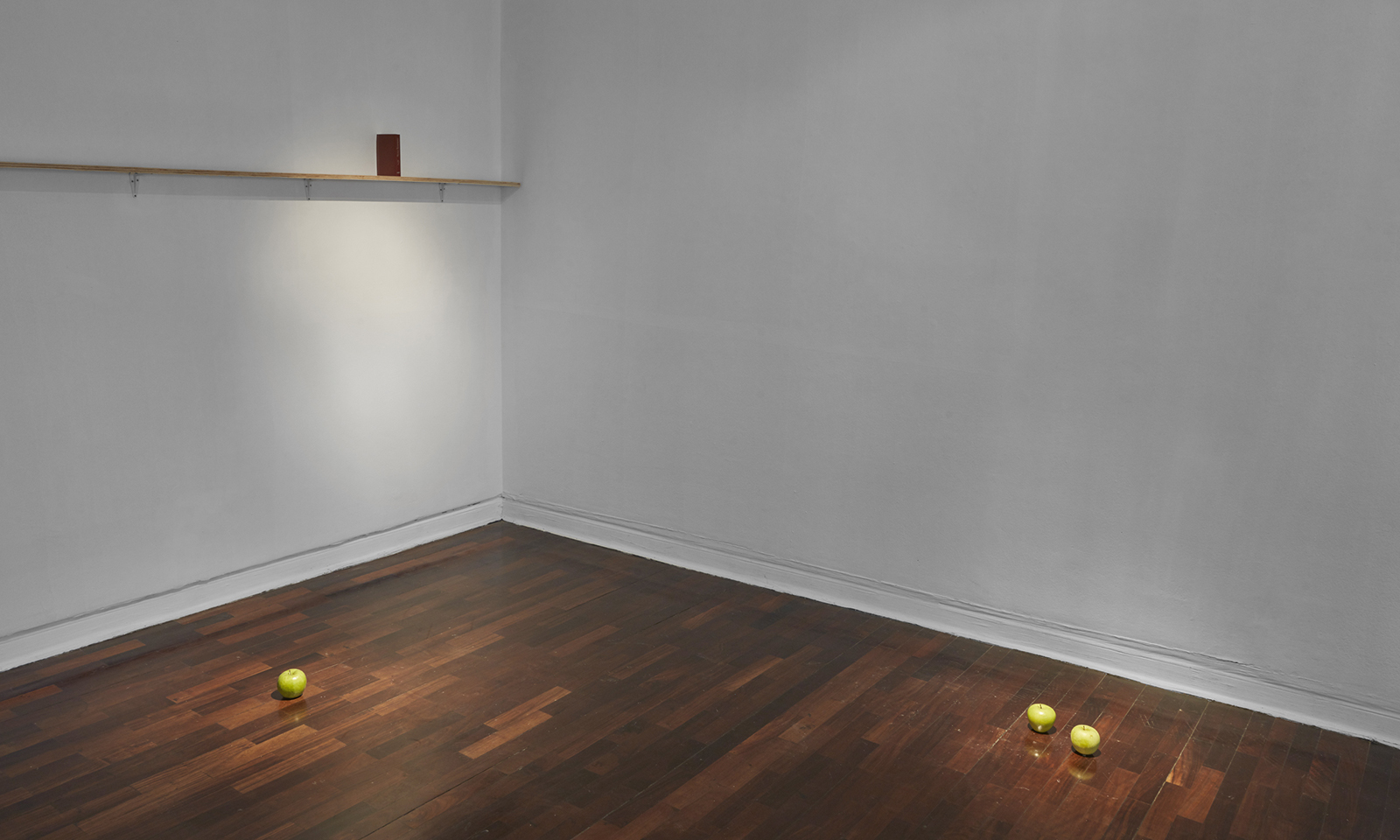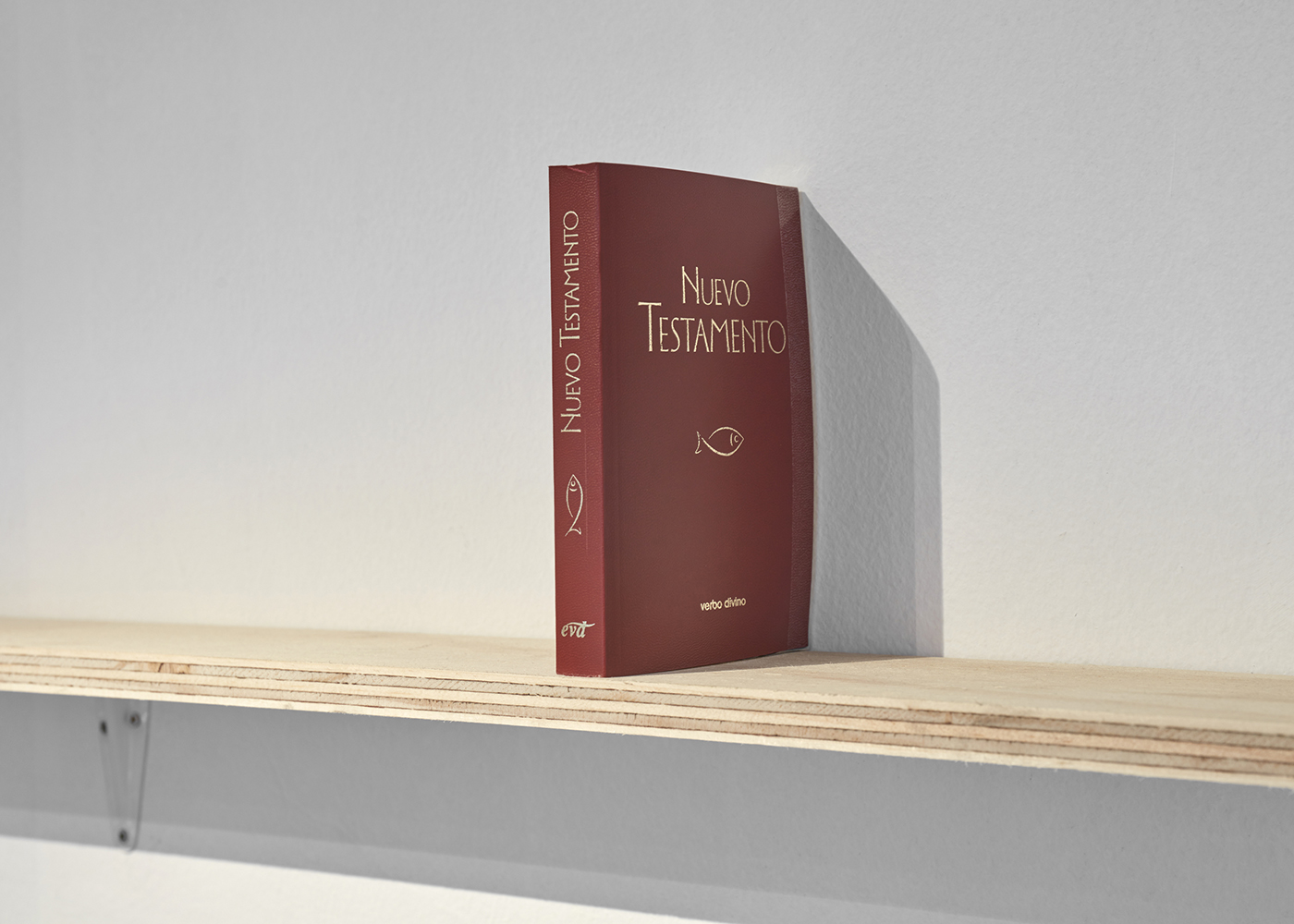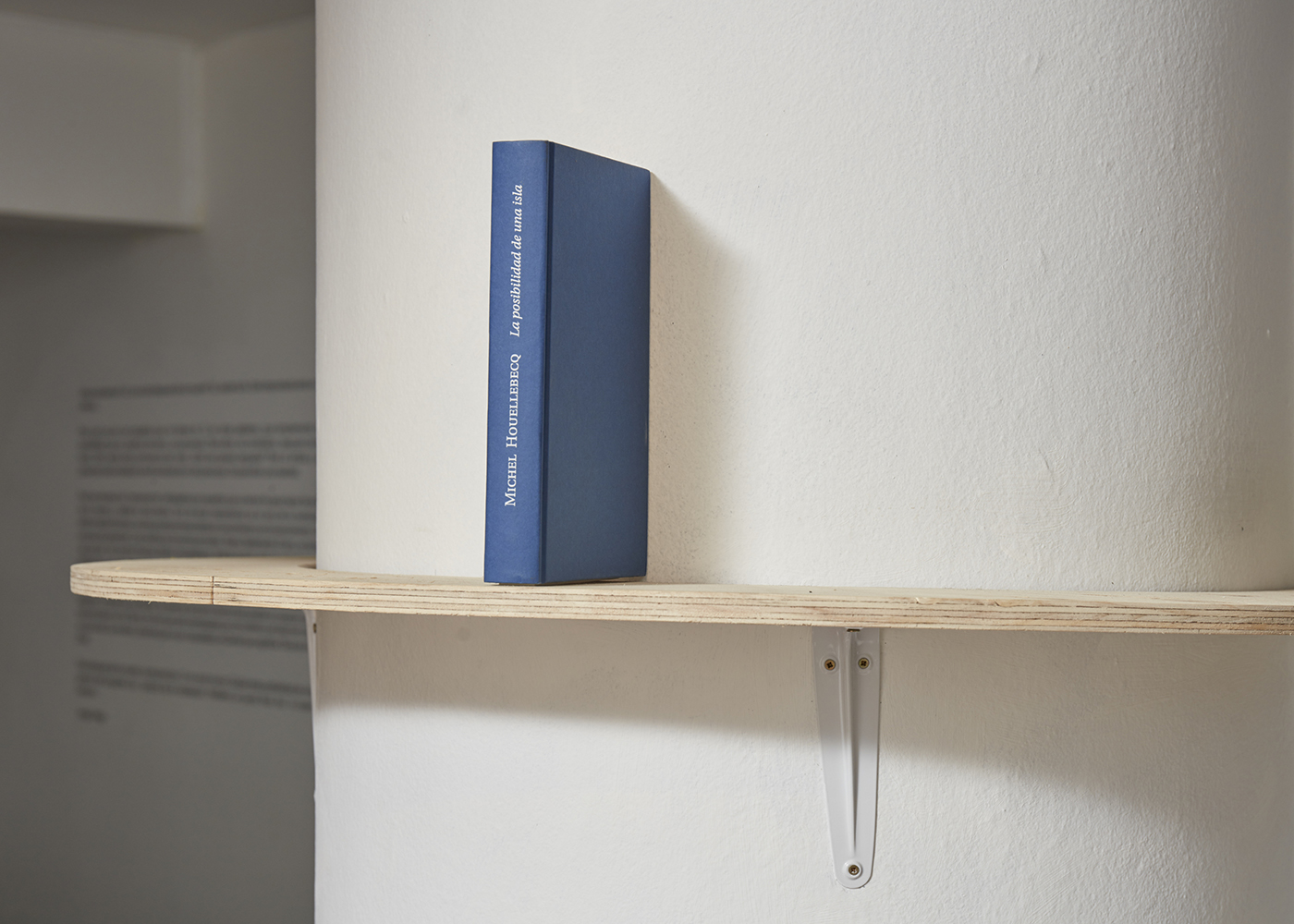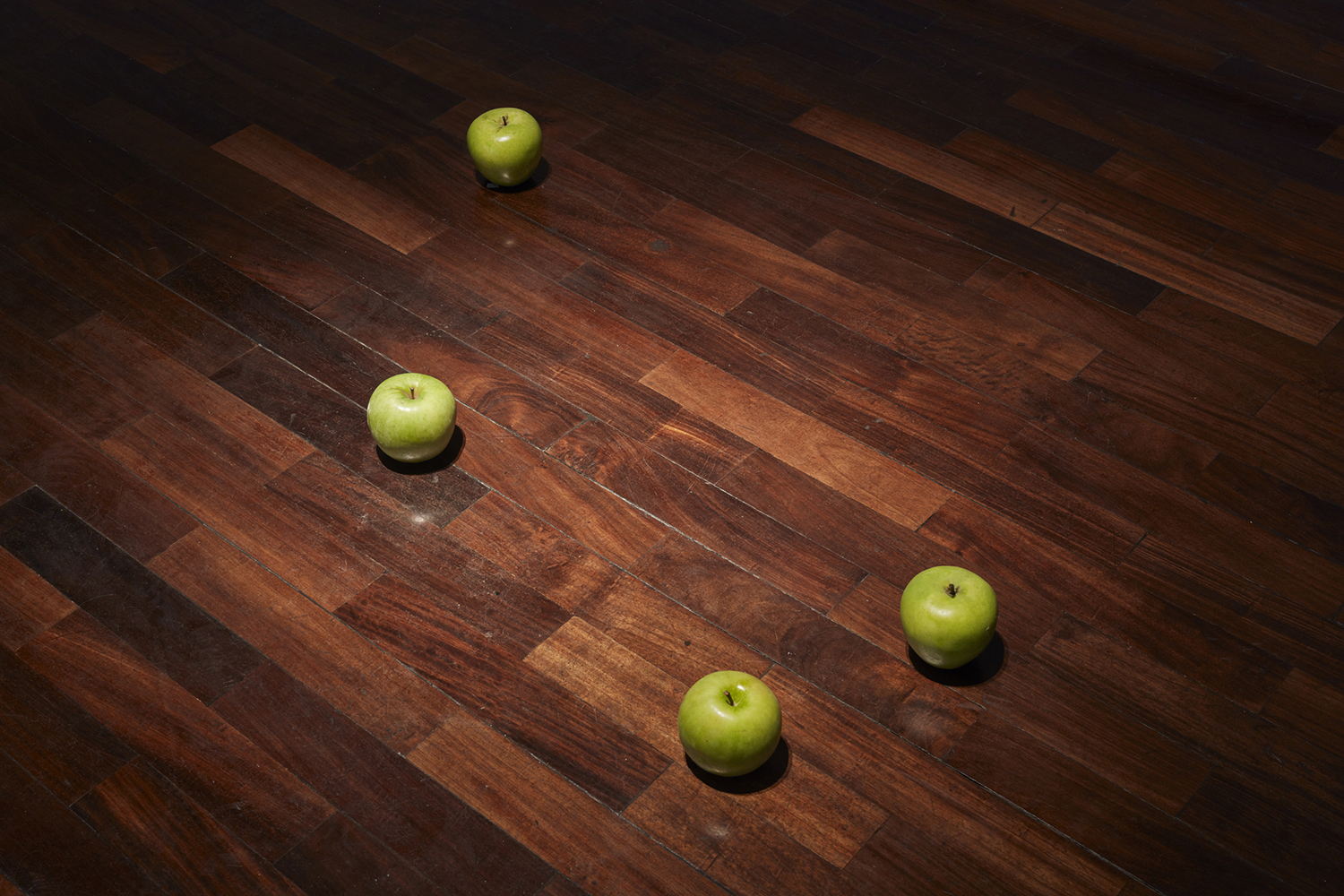Miguel Aguirre
Una atea y un agnóstico
An Atheist and an Agnostic
Is there such a thing as eternal life? Or life after death? Yes, through faith; whether such faith is placed in religion or in science.
But what happens to those who do not have faith? Or, in other words, those who simply do not believe in that possibility that is—let us be honest—merely a promise. For them, the incredulous, there is nothing after death. There is only this (consciousness of) life. Does this cause them anxiety? For the artist and his alter ego, who present this installation, that absolute end does not concern them. For them, it is a reality.
But they are interested in the “mechanisms” used by those who do have faith in order to make the factuality of death bearable and eternal life believable. One of those mechanisms is the use of a narrative that uses the telling of certain stories to construct this promise through knowledge and conviction. There are two books presented here. One of them is familiar to everybody: The New Testament. The other, not so much: The Possibility of an Island, by the French writer Michel Houellebecq. Together, they total over one thousand pages. As such, we must settle here for a brief summary. The texts found in The New Testament—and more specifically, The Four Gospels—were written nearly twenty centuries ago, and narrate the life and teachings of Jesus (“He whose savior is Yahweh”), his death and resurrection, and the promise made to all those believers who embrace his faith of an eternal life in the kingdom of God. In the second book, the fictional plot revolves around a belief that science will make it possible to create a (meta)man who will live eternally on Earth; a clone who will be replaced by an identical one ad eternum every time he completes his life cycle. His name—not coincidentally, in our opinion—is Daniel, which means “God is my judge” or “God’s justice.”
Life after death. Resurrection. Or never dying. Perhaps this possibility of eternal life is what truly causes anxiety in the authors of this installation. They prefer a full stop. That is their belief. And may it be so forever.
Ángel Vega
Lima, November 2016







